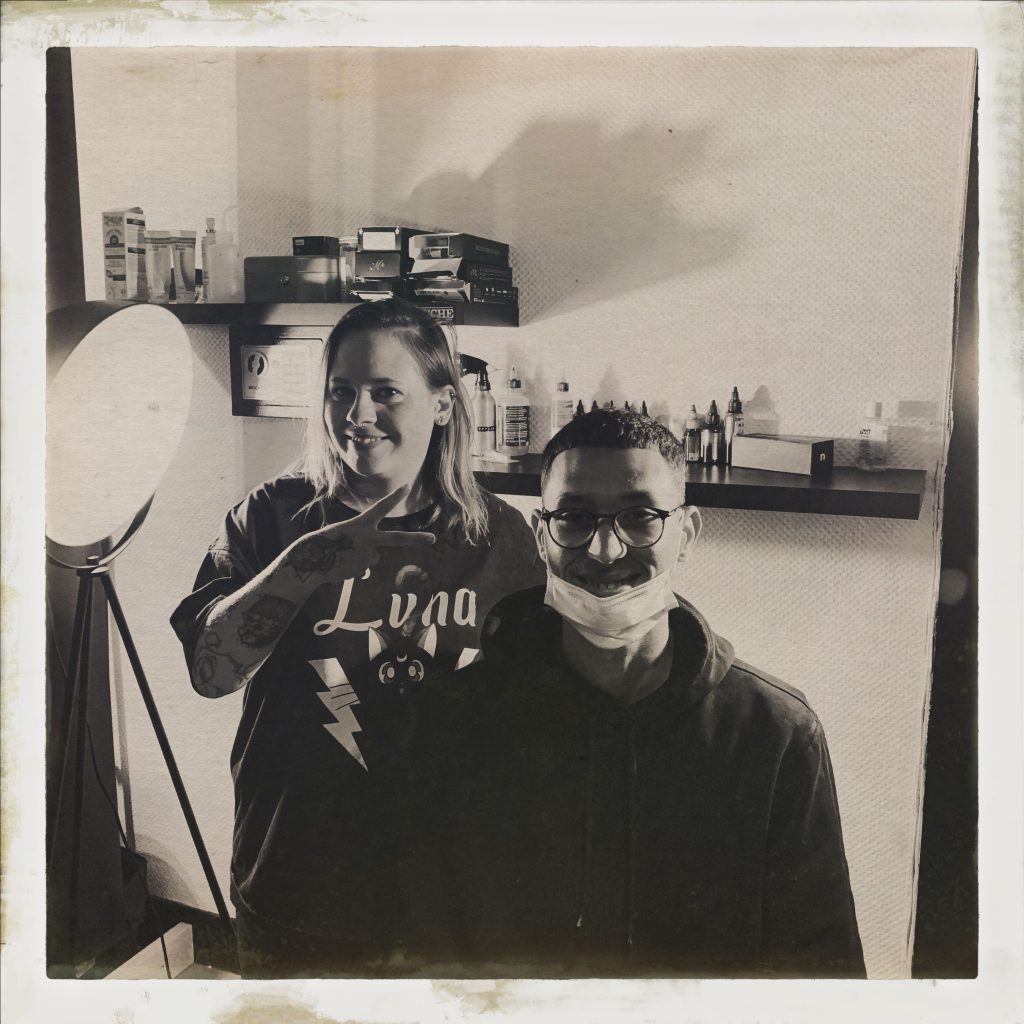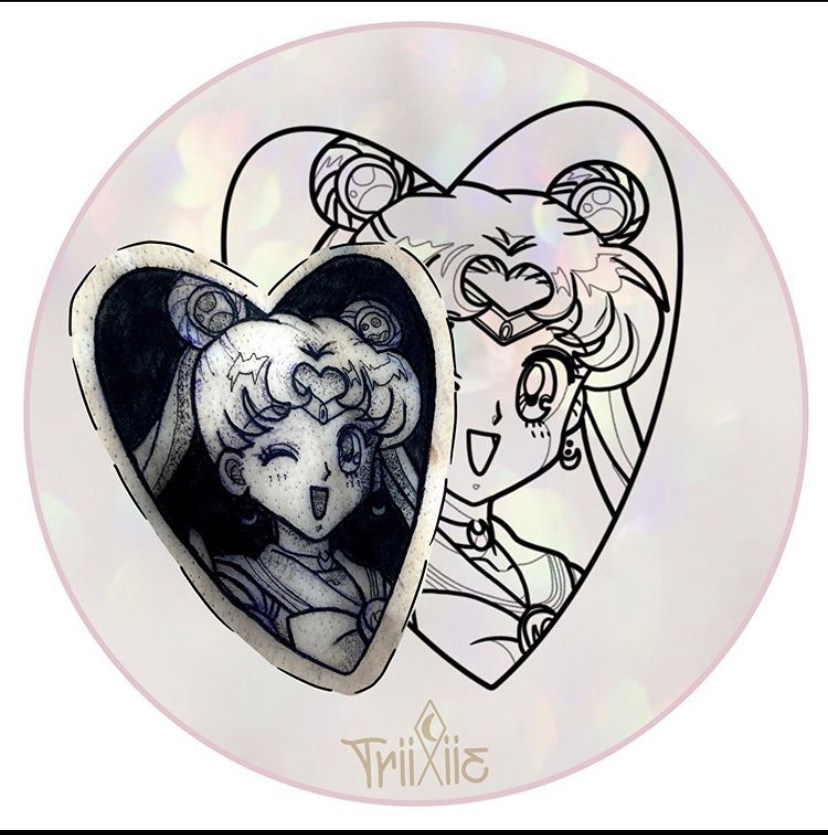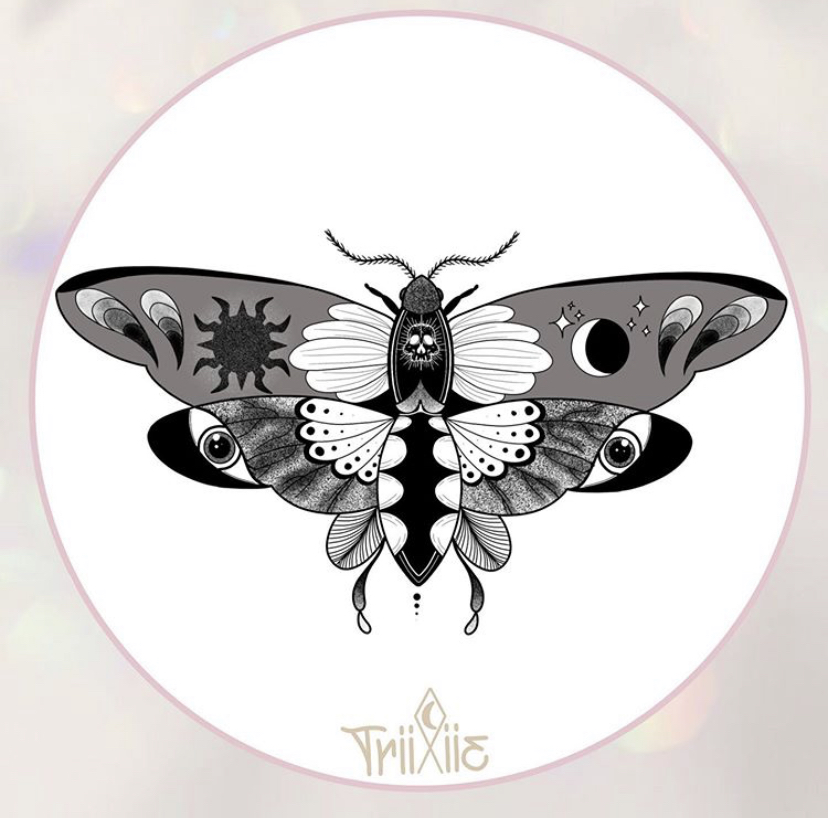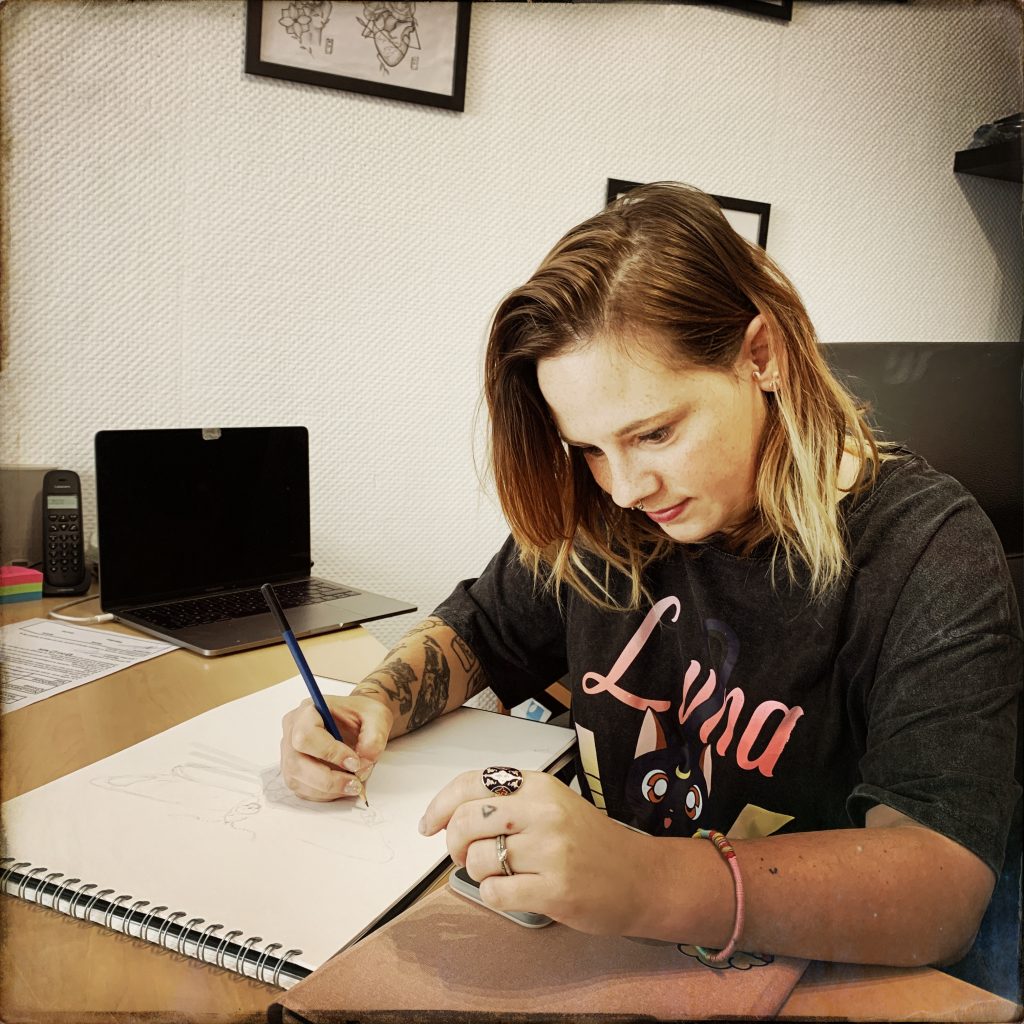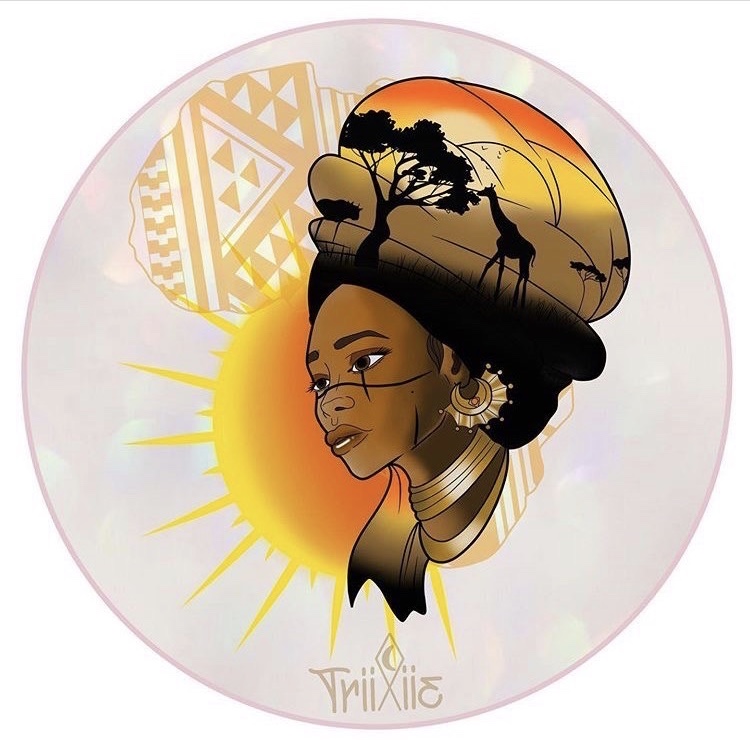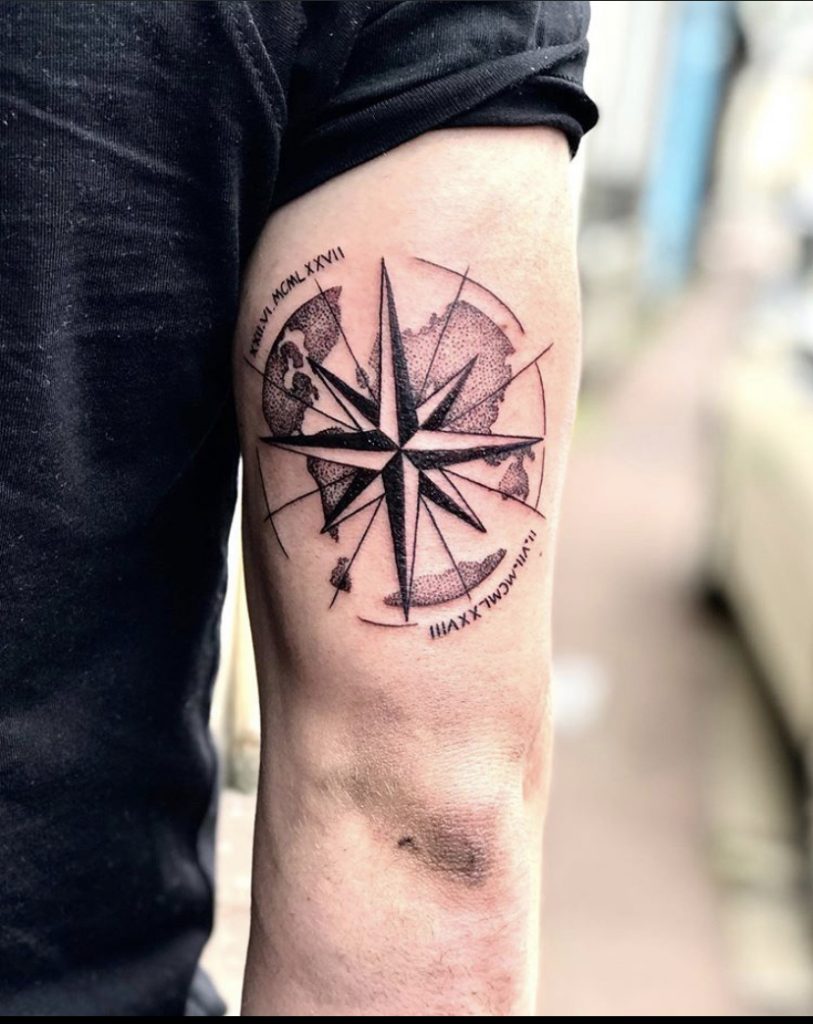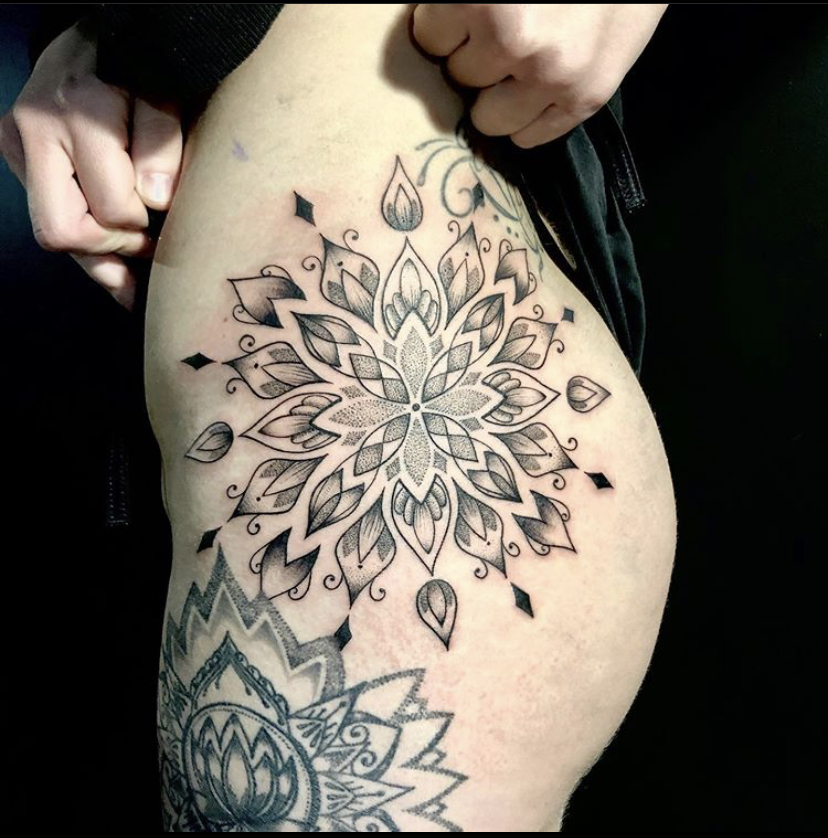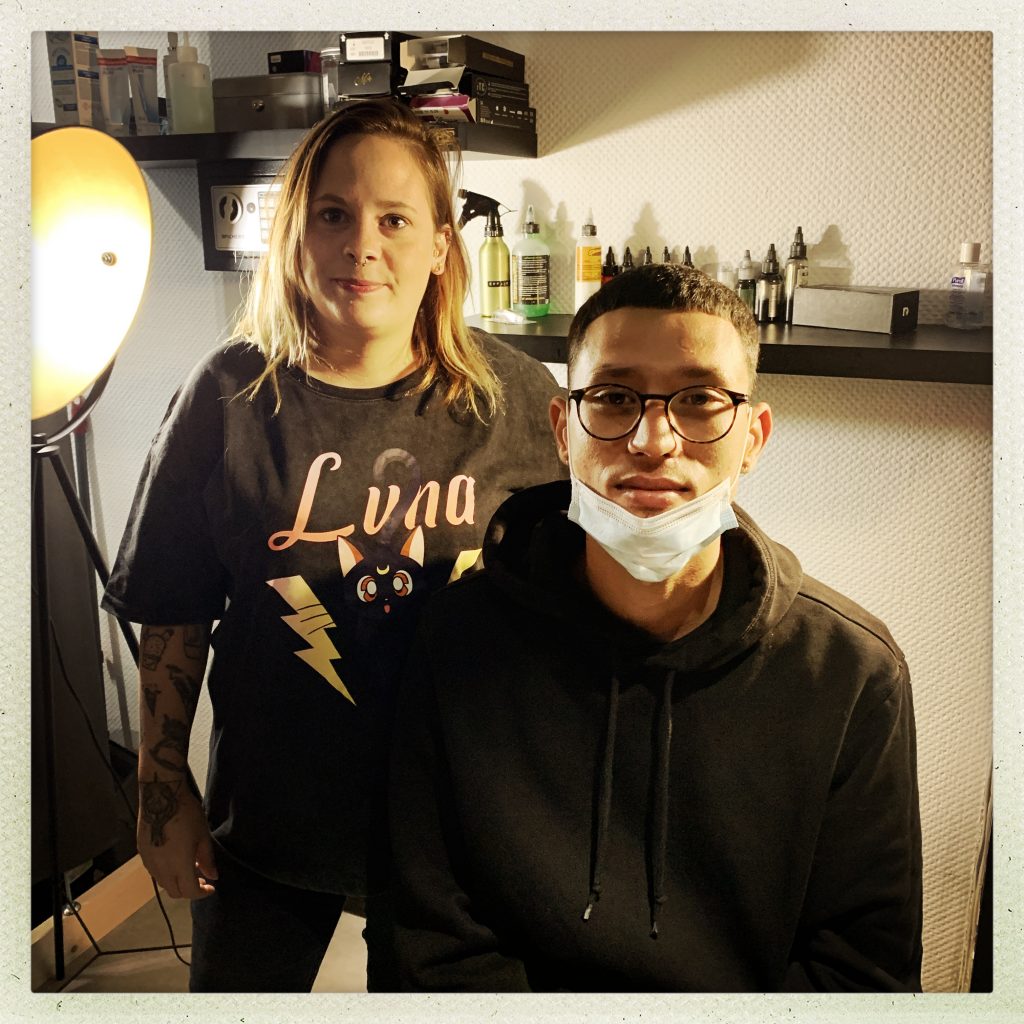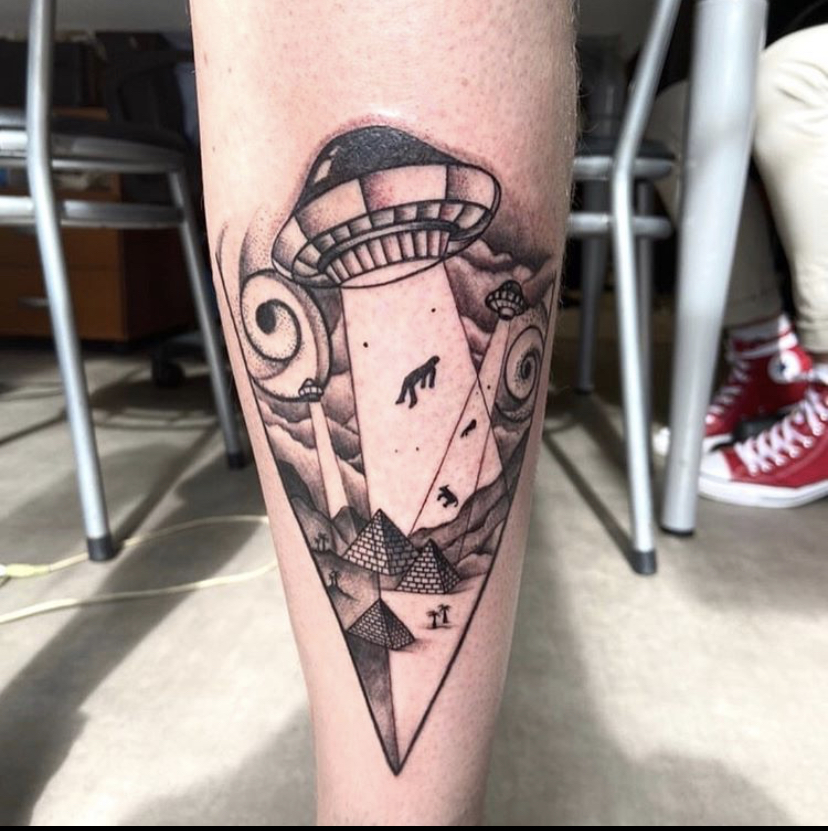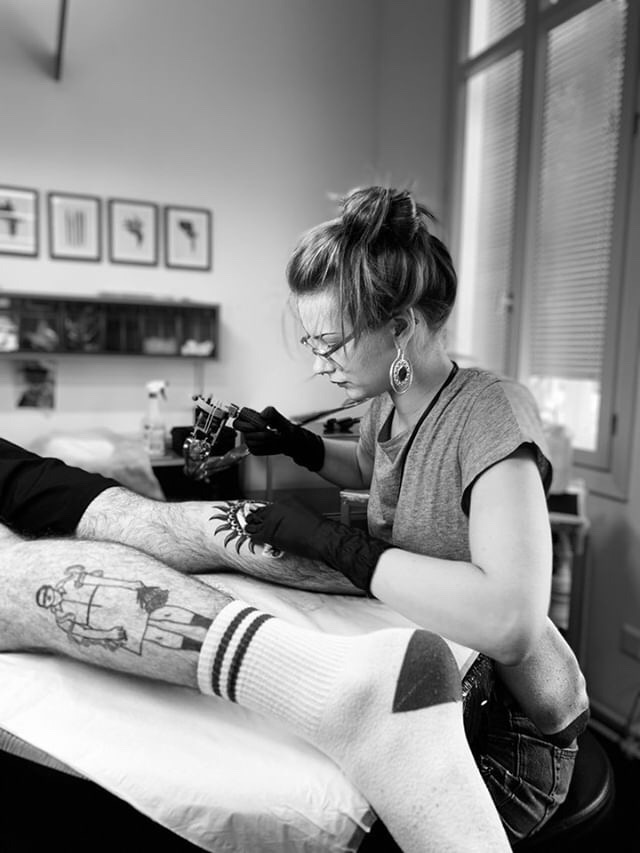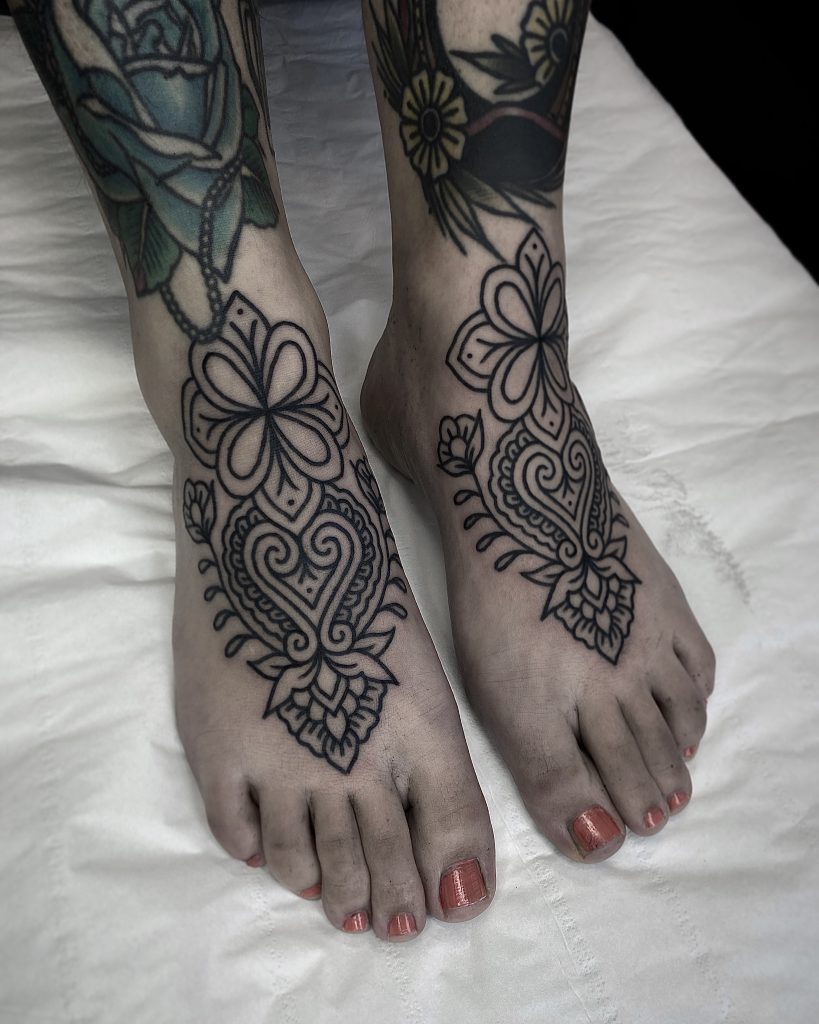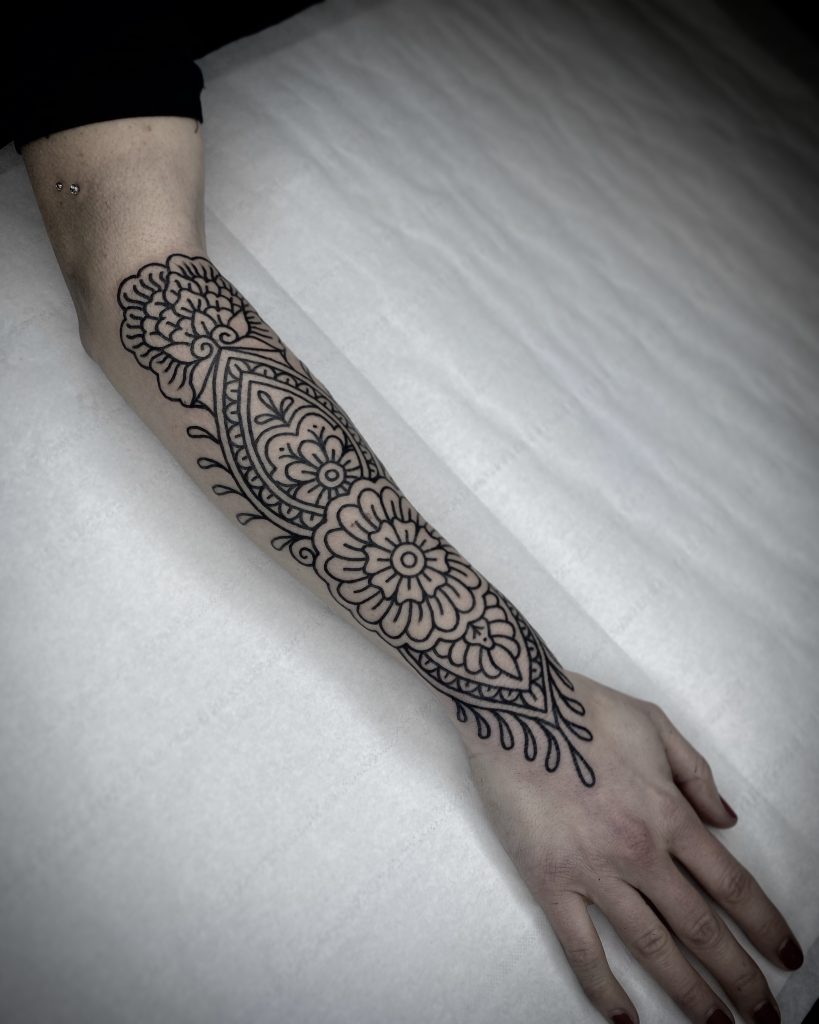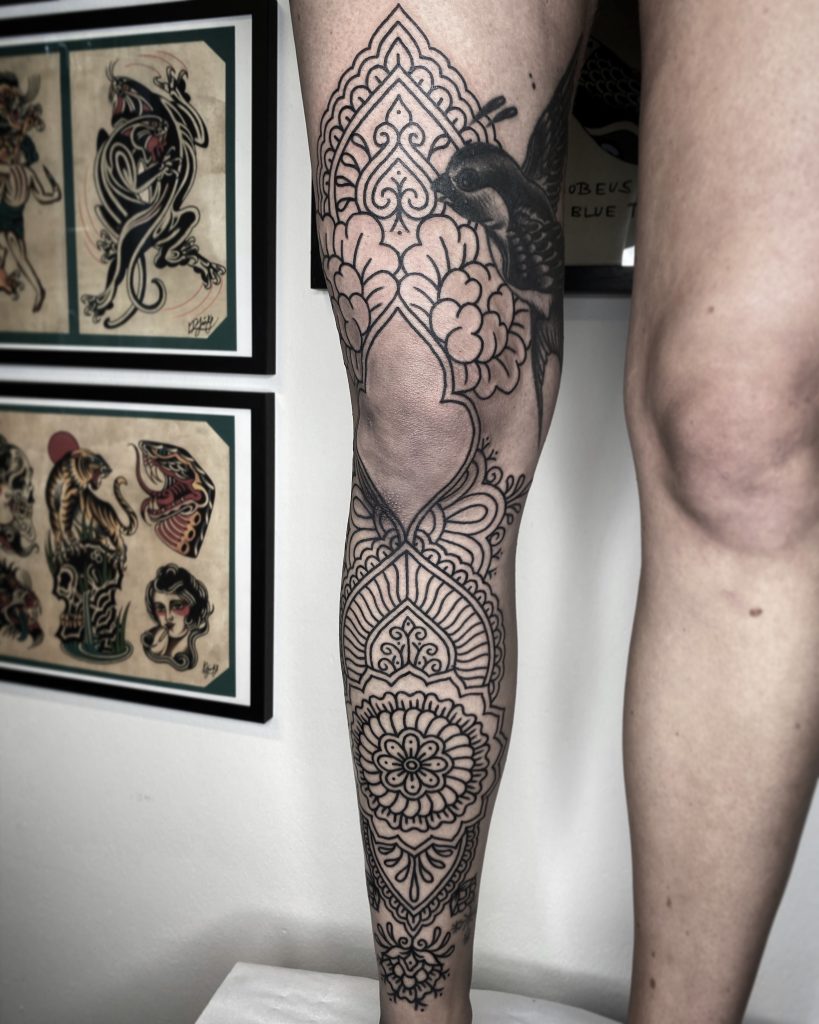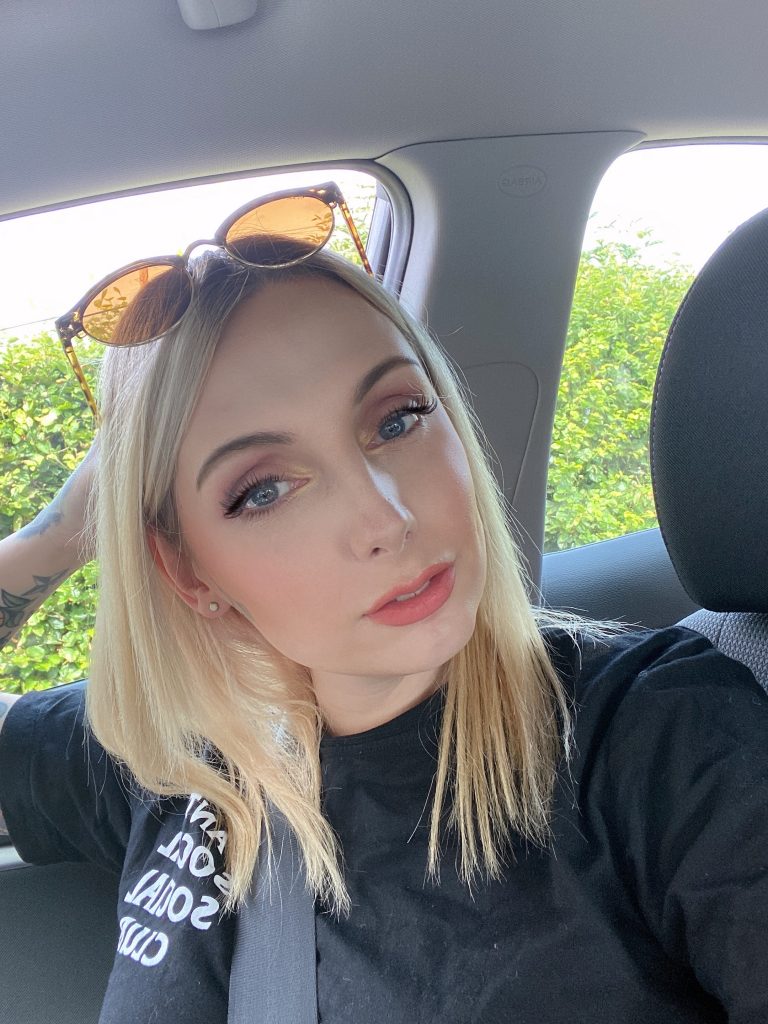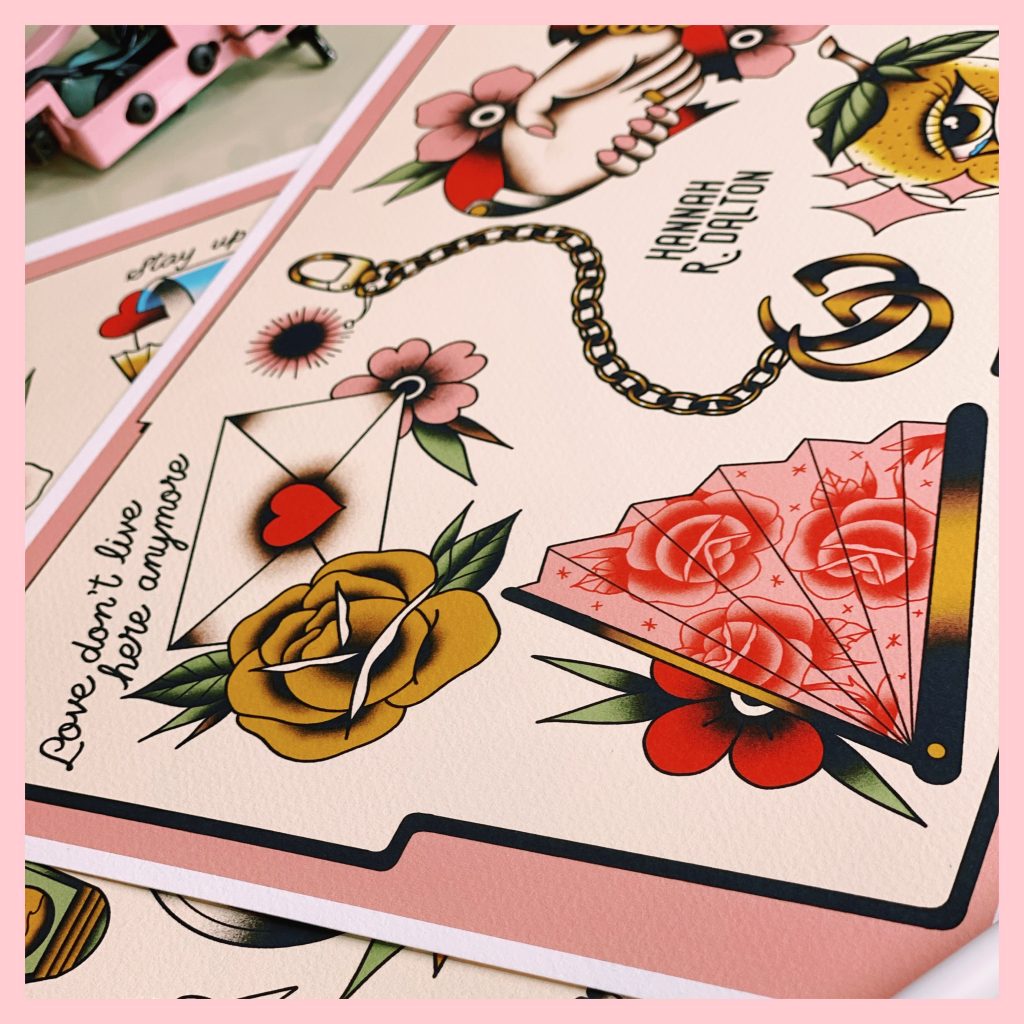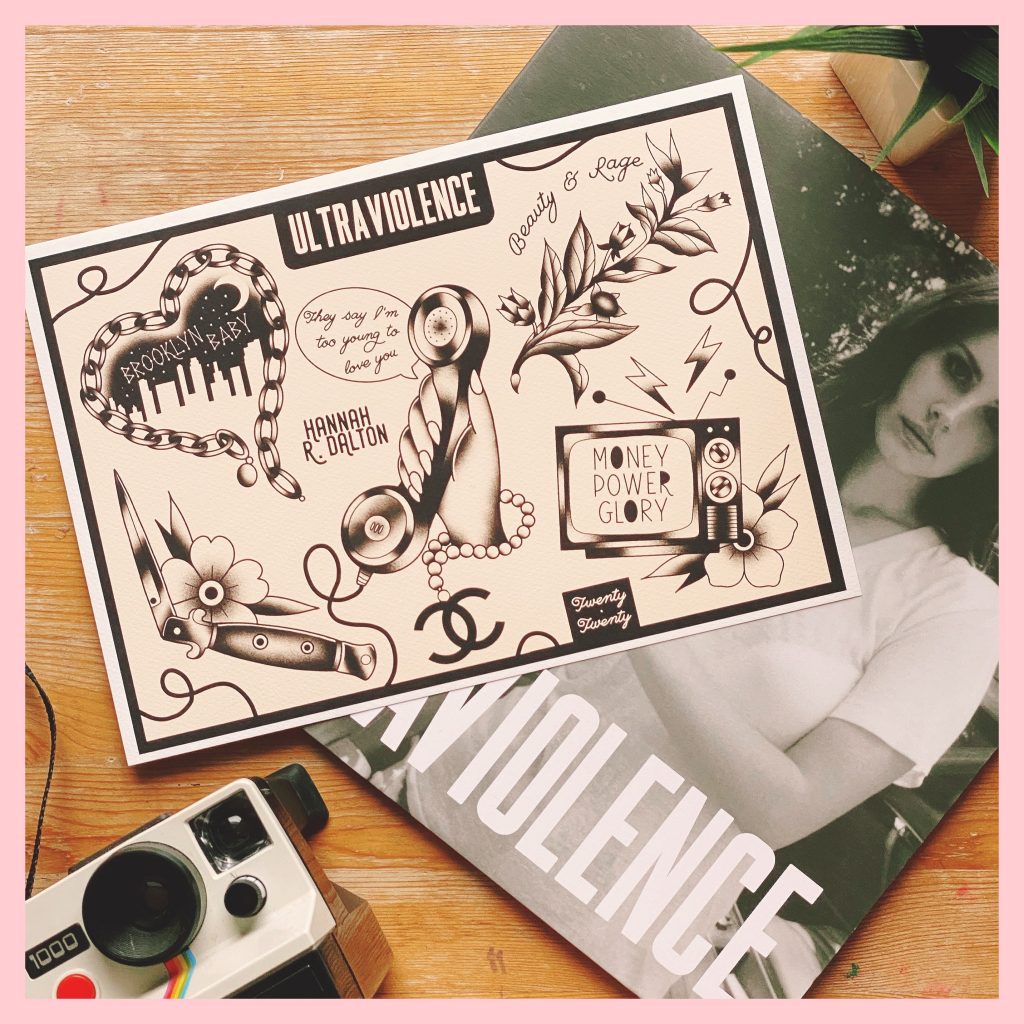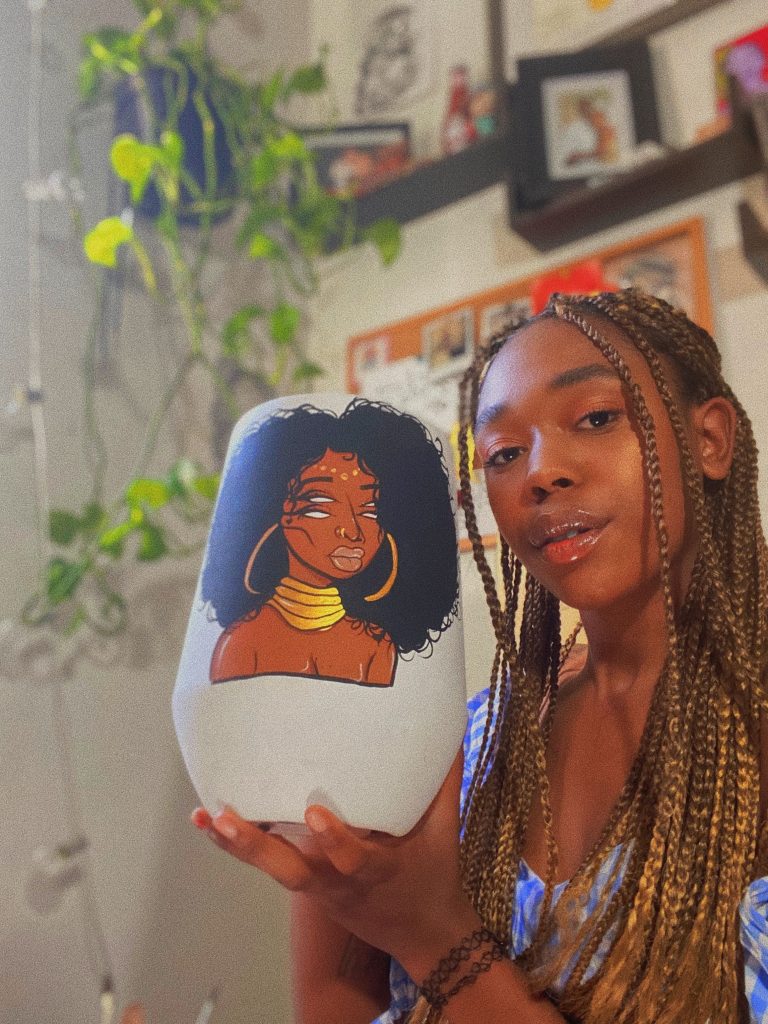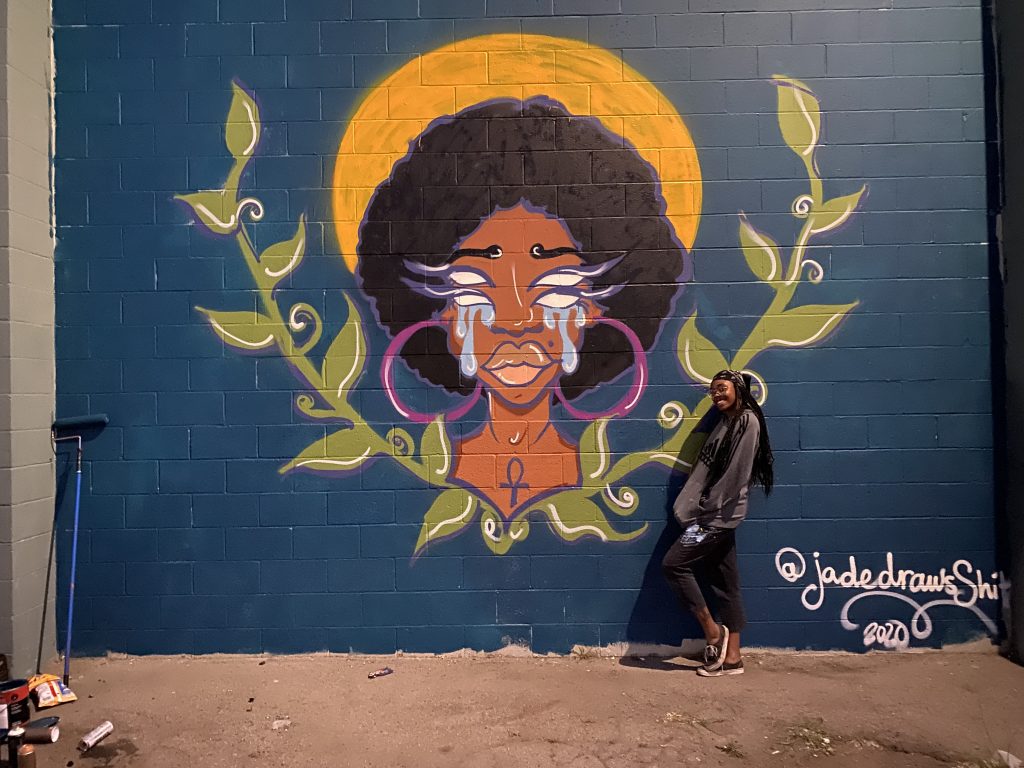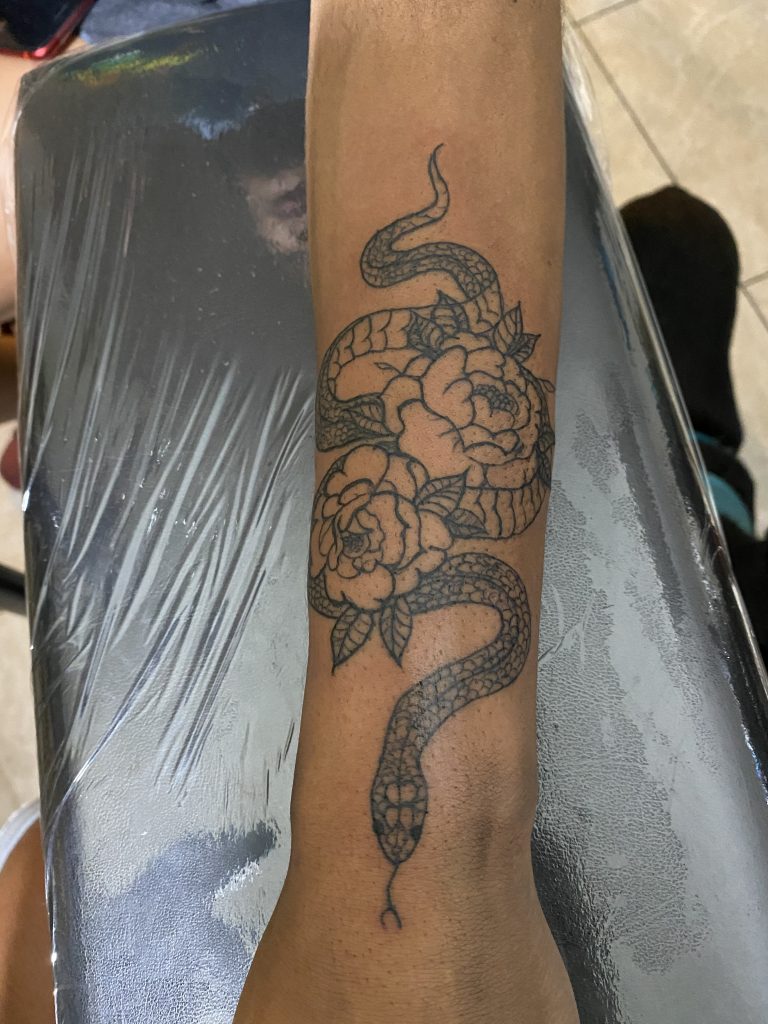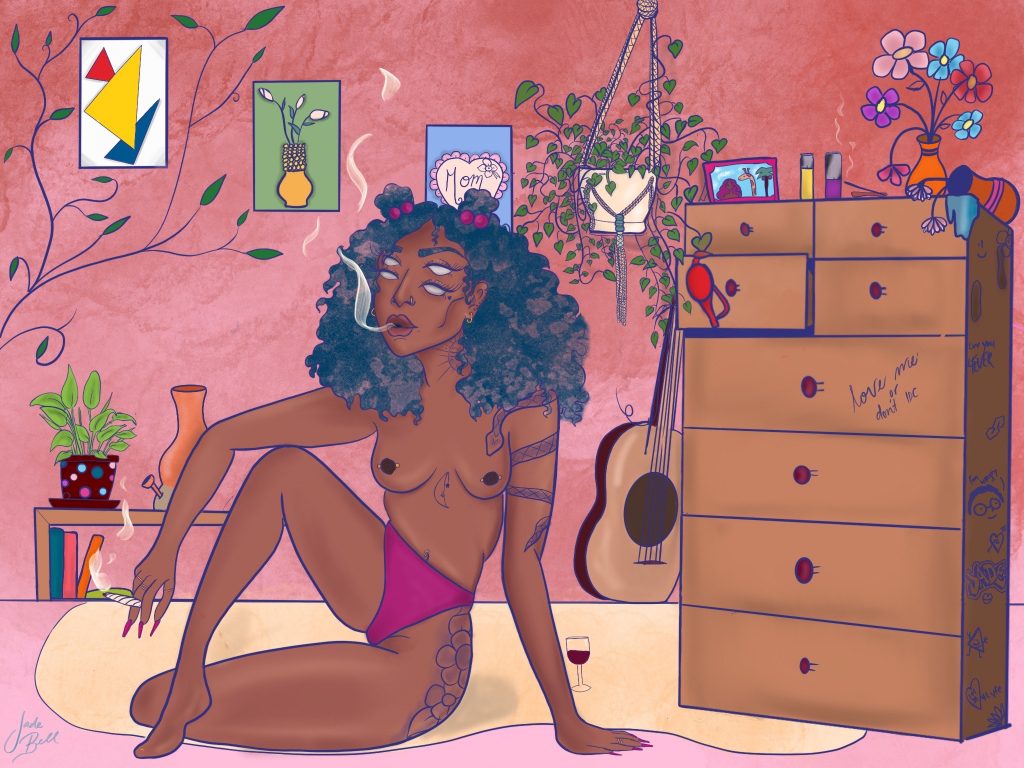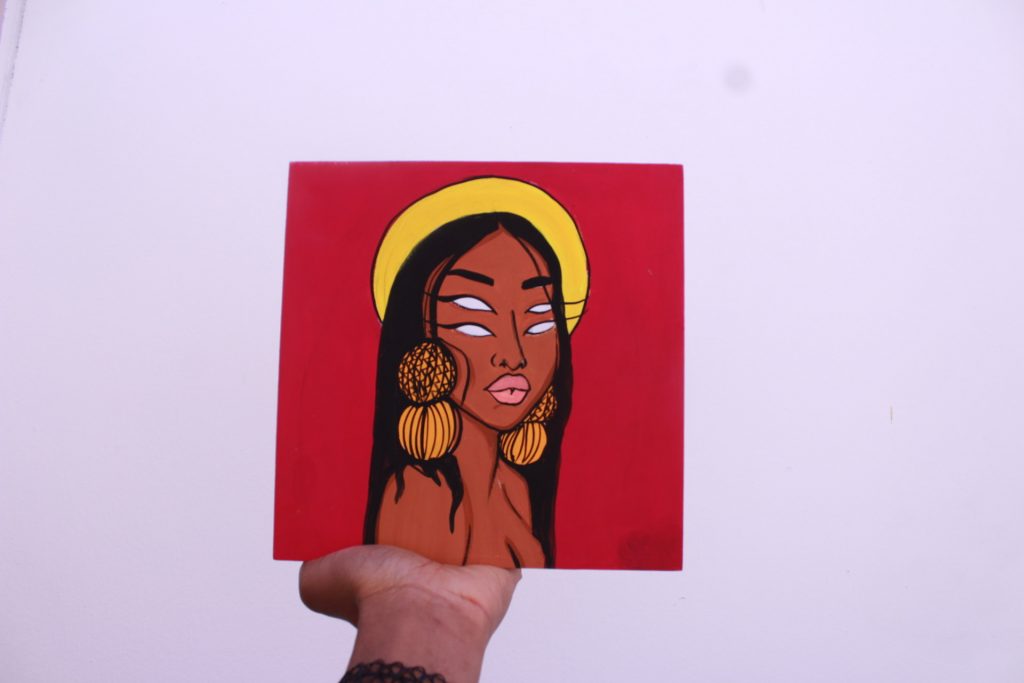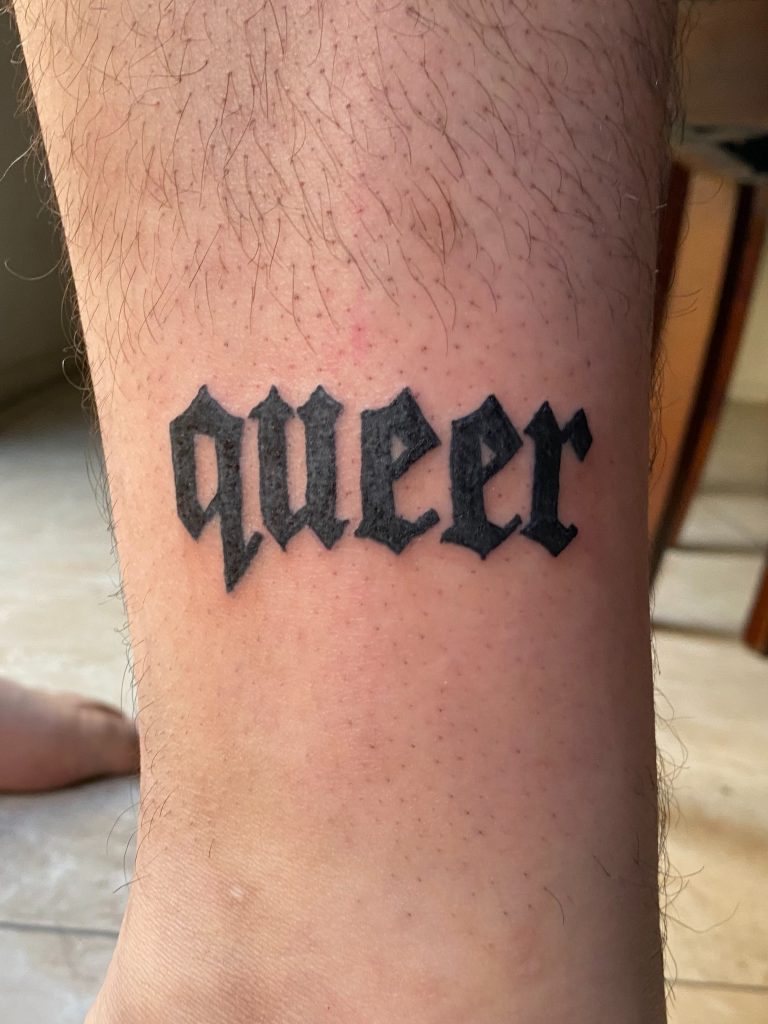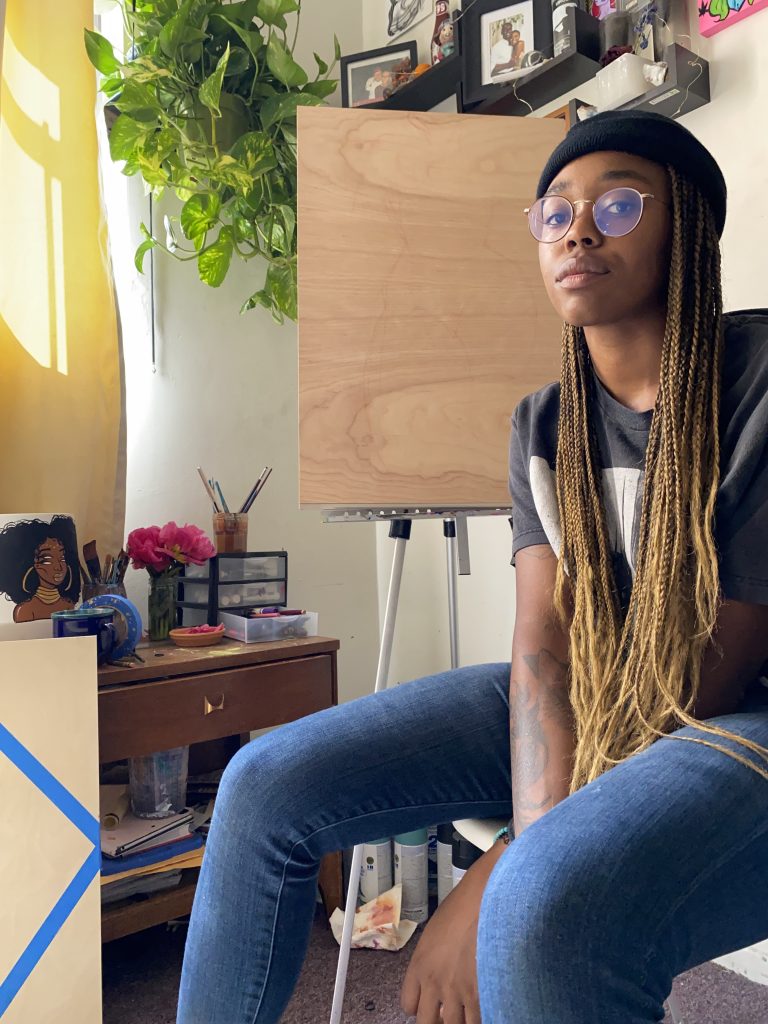We just love the delicate botanicals and nature inspired pieces that Cath Pilling handpokes. A budding tattoo apprentice at Bloom & Gloom Tattoo in Loughborough, she’s definitely one to add to your tattoo wish list…
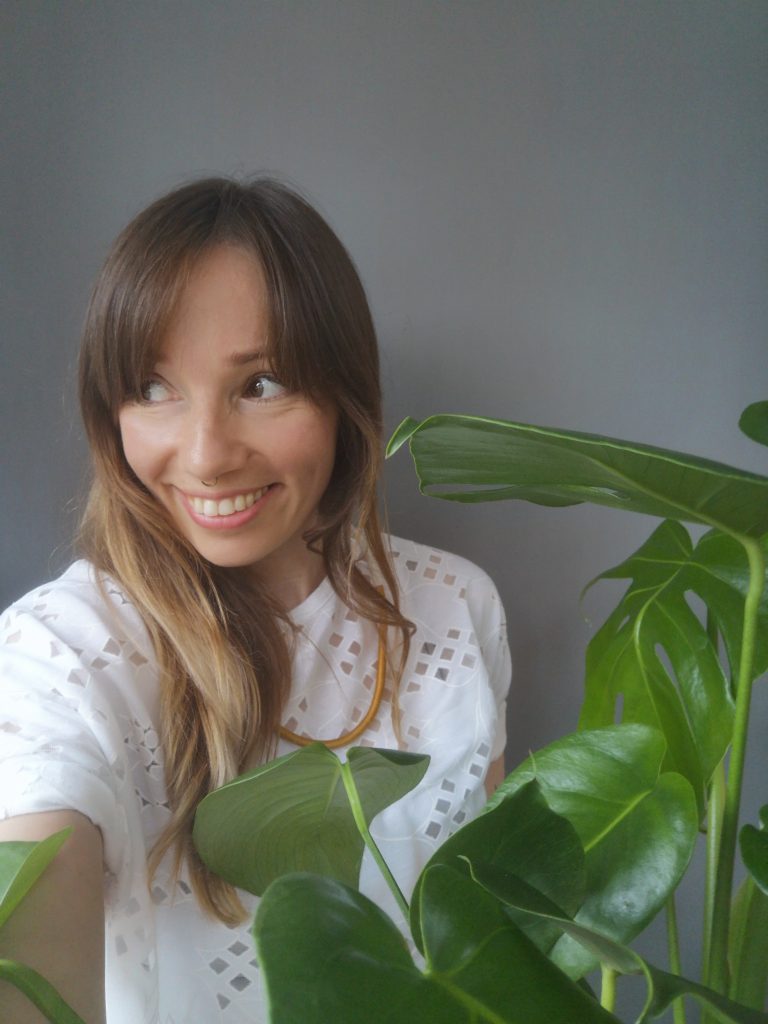
How long have you been apprenticing and how did you get your apprenticeship? I started my handpoke apprenticeship with Bex Fisher in August 2019. I’d been following her for a long time on Instagram, so when she announced that she was opening her own studio, I got in touch to ask if she was looking to take on an apprentice. She took a look at my work, invited me in for a chat and we clicked. I know I’ve been very lucky – apprenticeships are hard to come by and I’m grateful to be under the wing of someone who is lovely as well as a great teacher.
When I was offered the apprenticeship I had a moment of fear creep in that I was too old, I had too many responsibilities (young kids and another part-time job), and that I, well, might be shit at it. I’m so glad I ignored those feelings because it’s one of the best things I’ve ever done.
I’ve got a lifelong obsession with creative imagery. I did a degree in Fine Art years ago and I’ve always produced artwork, but I didn’t always want to be a tattoo artist – It just wasn’t on my radar when I was younger. After having different careers (mostly in the arts) and starting a family, I came to tattooing sideways and a little later than most at 35. It’s never too late, right?!

What drew you to the tattoo world? I became interested in tattoos when I was about 30, at which point I was a clinical aromatherapist, which I loved, but I really wanted to be doing something more creative yet still working with people one-to-one. In all honesty, I don’t feel like it’s the tattoo world as such that I’m drawn to. In fact, it can seem pretty intimidating, right?! It’s a strange old industry which can be amazing and full of wonderful humans and incredible work, but also I’m aware that the tattoo world has it’s problems, usually stemming from the way people treat each other. I’m not a spring chicken and life is too short for that shit. The thing about tattooing that I am really attracted to is the creative freedom (drawing and being creative as a job? Win!) and working with clients.
Having that one-to-one experience with a client is what I miss about being an aromatherapist, so tattooing feels like a perfect balance of creativity and human connection. With handpoke especially, it feels like there is an intimacy there. I feel so honoured whenever anyone wants me to permanently mark their skin. I think it’s really important to make people feel as comfortable as possible in an appointment, both physically and mentally.

Can you tell us about your own tattoos, and your first tattoo? Do you have a favourite or favourite tattoo experience? All but one of my tattoos are handpoked. The first one I had was totally spontaneous. I went to London for the day to visit The Other Art Fair. Rosa Perr, aka Bluestone Babe was over from Brooklyn especially to tattoo at the fair, so I jumped at the chance to have a small flash piece above my elbow of two crossed twigs. I fell in love with the process, it was magical and calm – I was hooked! She was really lovely to chat to as well and told me about how she got into tattooing. That was my light bulb moment, and my favourite tattoo experience. I guess the best tattoo experiences I’ve had have been when I’ve had a good chat with the artist. You’re in close proximity to someone potentially for hours, and you’ll always look at your tattoos and remember having it done, so a positive, friendly experience is really important.
All of my current tattoos are nature and botanical based, I’d just like to be covered in nature! I have eight in total at the moment, so I have a lot of space and I’m pacing myself with getting more. I’ve got a list of artists who I’d love to visit over the next few years. I don’t really have a favourite tattoo, I love them all for different reasons, some for the aesthetics, some for what they represent.

What inspired you to handpoke your tattoos rather than use a machine? Why did this appeal to you? After that first tattoo with Rosa, I couldn’t stop thinking about it. It wouldn’t have been the same quiet and calm experience if it was a machine tattoo. Handpoke is slower, gentler, quieter. I’m not a big fan of the machine noise – it’s a bit more difficult to talk and it’s more invasive for the skin. There’s a lot of debate as to whether handpoke is less or more painful, but in my experience it’s much less uncomfortable compared to having a machine tattoo. However, it also depends on other factors like personal pain threshold, placement, size and detail. It can get a little sore, but that’s generally it. The healing process can also be a lot faster.
I like that modern handpoke is derived from traditional ancient methods – there’s a beauty in getting back to basics.
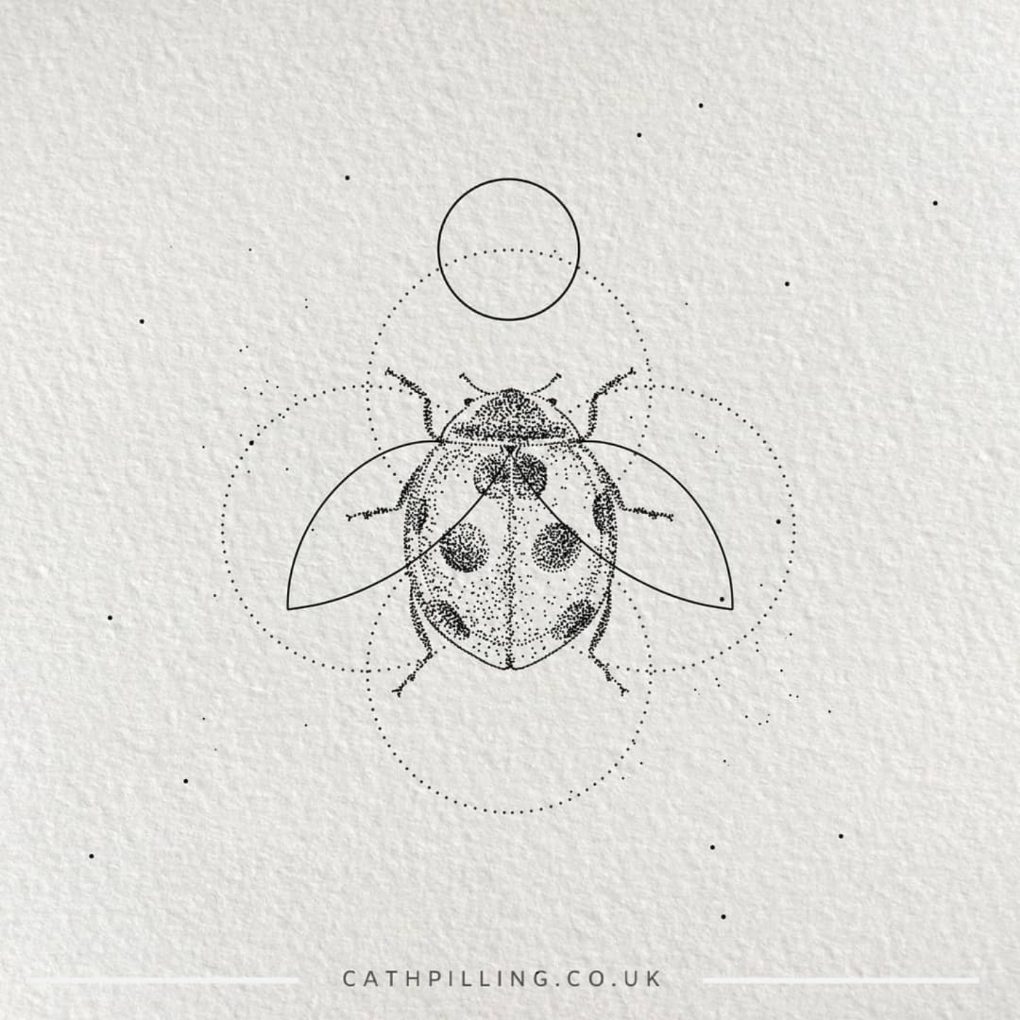
Can you tell us about the process behind your tattoos, what inspires you, how would you describe your style? Without the need for a machine, the actual tattoo process only needs a minimal set-up. Each tattoo is created by gently poking ink under the surface of the skin. It’s a more laborious process than machine tattooing and takes longer, but I’m working on increasing my speed whist maintaining accuracy. I’d rather a tattoo takes twice as long and looks great, instead of trying to do it quickly and it end up looking bad.
I’d describe my style as delicate and organic. I’m conscious of pigeon-holing myself into a particular style, so sometimes I try to draw other things and in different styles that other people want to see or what I think I should do. When I do that, it just doesn’t sit right. I’m never 100% happy with drawings if my heart isn’t it. I love anything botanical and nature-inspired, images that won’t age. Different tattoo styles will go in and out of fashion, but nature-based imagery itself won’t. I’ll do my best to keep my creative integrity in-check as much as possible, both in style and content, but that’s if I have the luxury of being able to pick and choose the work I do.
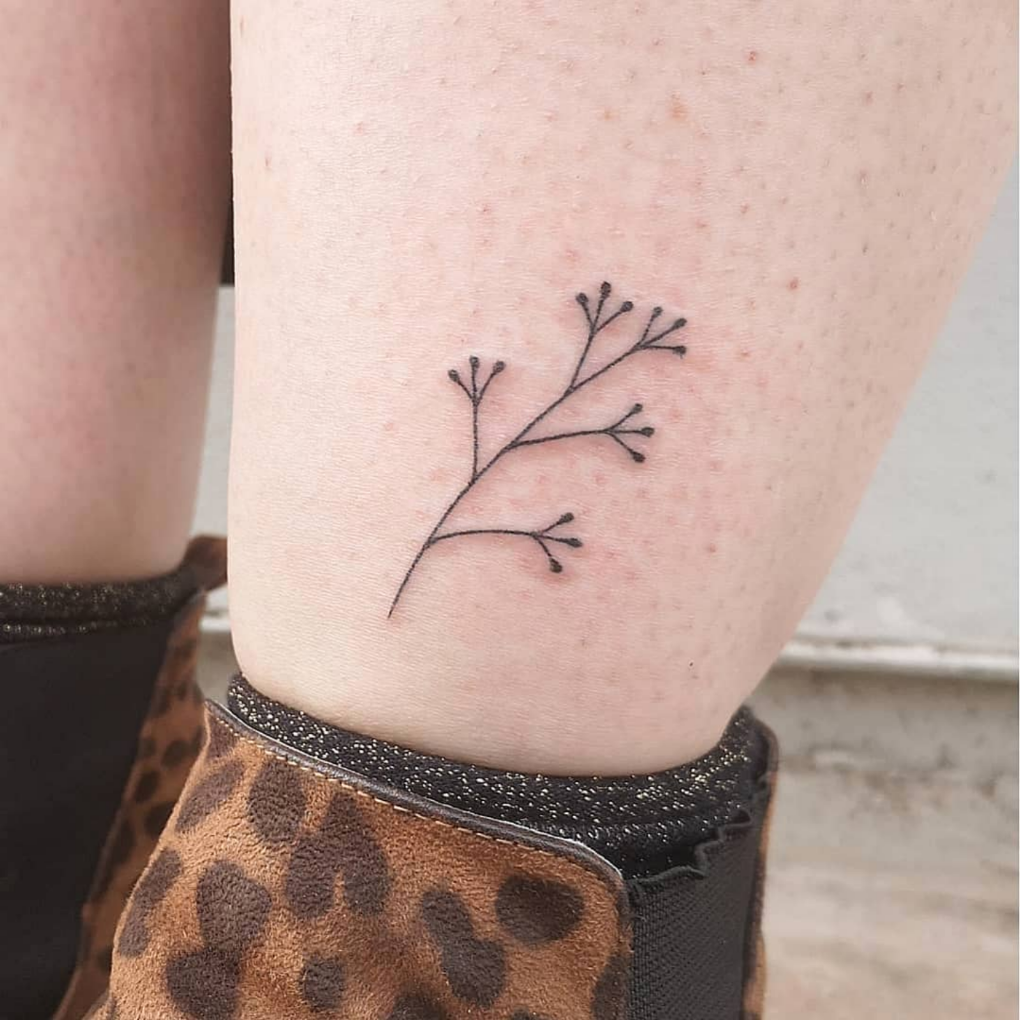
What do you like to draw/tattoo and what would you like to do more of? I think nature inspired designs will always be my main thing, but I also love working with abstract shapes and experimenting with composition of elements. I’d like to try more illustrative, perhaps surreal collage-style combinations of linework and dotwork. I’m planning on bringing in some bits of colour too – really excited about that! Everything I’ve done so far has been blackwork in order to purely focus on getting my technique right.

What’s been the best part of your apprenticeship so far and what have you found the hardest? I’ve been over this question in my head a lot, but I can’t pin down what the best part is. The most valuable part of it is learning so much – Some of those things are key pieces of knowledge and information in regard to the process (especially hygiene and safety), and some are great tips that I wouldn’t otherwise know.
The hardest thing? Pacing myself when it comes to progress. One one hand, I want to learn it all yesterday, whiz through my apprenticeship and be working in the studio full-time. Realistically, it takes a lot of time, commitment and sometimes sacrifice. I regularly have to remind myself that I’m doing my apprenticeship part-time between my other job and being a parent, so of course my progress is going to be slower than if I could be at the studio full-time. It’s frustrating sometimes, but only because it’s what I want to do.
